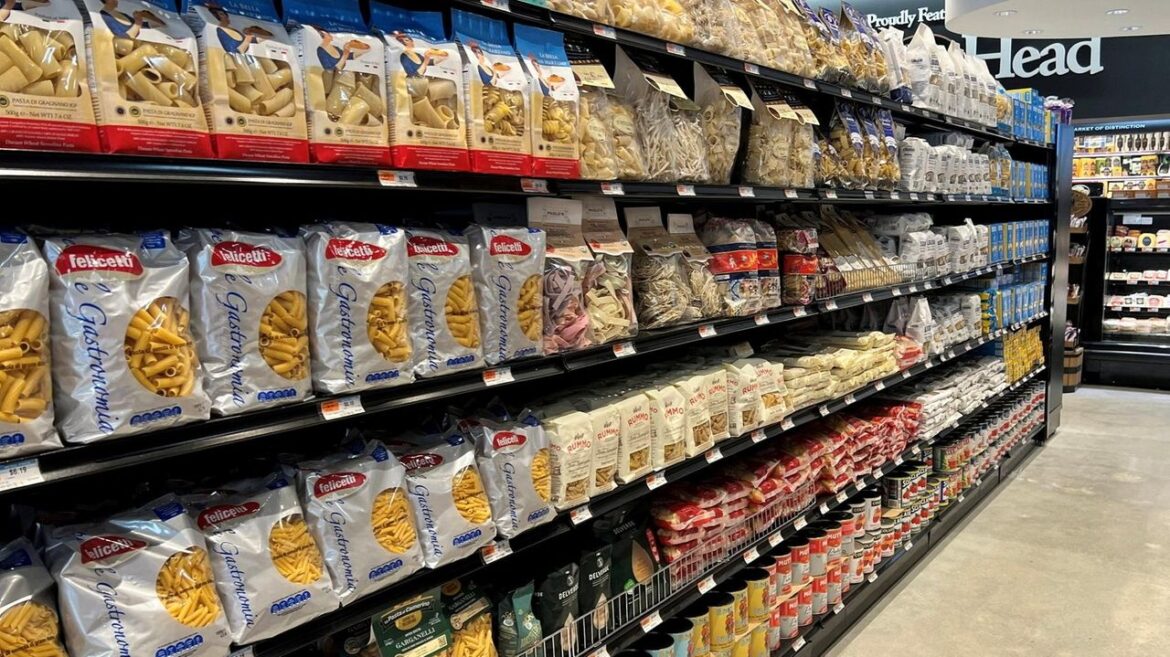When Paul Barbieri heard in September that new U.S. tariffs could more than double the cost of imported Italian pasta, he said he spent thousands of dollars stocking up across his three Long Island stores.
“All our stores are bursting at the gills with pasta,” Barbieri, who co-owns Pino’s Italian Food Market by the Original Salpino’s with his father and brother-in-law, told Newsday on Thursday. “We bought bulk — as much as we possibly could … hoping it would last until the tariffs stop or decrease.”
Under a preliminary U.S. Commerce Department decision issued in September, tariffs on imported pasta from 13 major Italian companies could soar up to 107% as early as January. The move, which could affect popular brands including Barilla, La Molisana and Garofalo, builds on a review launched under the Biden administration that alleged several Italian producers were selling pasta in the United States at “less than normal” prices.
The decision, if it takes effect, would add a new 92% duty on top of an existing 15% tariff on European Union imports, which the Trump administration has argued would level the playing field for American manufacturers.
In a statement, Barilla told NBC News that it is “evaluating possible initiatives ahead of the final determination next year.”
Like Barbieri, whose business operates stores in Wantagh, Babylon and Dix Hills, other Long Island grocers carrying imported pasta from Italy are bracing for tariffs that could force them to choose between raising prices or swallowing the added cost.
For now, most are waiting to see if the Trump administration rolls back the duties as it has with other trading partners.
“I haven’t seen anything terrible happen yet, where there’s a lack of customers or people aren’t buying the merchandise,” said Anthony Fiorito, a co-owner of the Italian market Seven Brothers Gourmet in Oceanside. “As of now, we are just hoping it blows over.”
White House spokesperson Kush Desai told Fox Business on Thursday that the pasta makers have several months to participate in the review “before this preliminary finding is finalized” and stressed that if the pasta companies provide the requested data, the tariff rate would be significantly lower, between 7% and 10%.
The Commerce Department did not immediately respond to a request for comment from Newsday.
Hoping for relief
Some grocers are betting the dispute will be resolved before prices climb.
Frank Salvaggio, owner of Frank & Maria’s Italian Market in Bay Shore, said he was optimistic the Italian pasta makers would negotiate with the administration and avoid those high tariffs. But if not, he hopes to avoid tariff impacts because he mostly buys from small pasta suppliers, Salvaggio said.
Tom Opitz, manager of EMF Gourmet Italian Market in East Northport, said that he’s waiting to see how tariffs will impact pasta costs, but he hasn’t yet had to increase his shelf prices because the increased cost of imported goods hasn’t been drastic.
Certain Italian institutions on Long Island are less likely to feel the pinch.
Italian restaurants, for example, have a greater ability to swap imported Italian pasta for another, more affordable pasta than specialty grocers, said Jim Sanderson, managing director and research analyst at the research company Northcoast Research.
And some markets, such as Baldanza Brothers Mr. Sausage in Huntington, won’t be affected because they make much of their own pasta.
Giuseppe Baldanza, the market’s owner, said much of his pasta sales are from his homemade noodles.
“In this tariff situation, the best thing you can do in business is make your own stuff,” Baldanza said. “I don’t want a customer to pay $5 for a box of pasta.”


Dining and Cooking